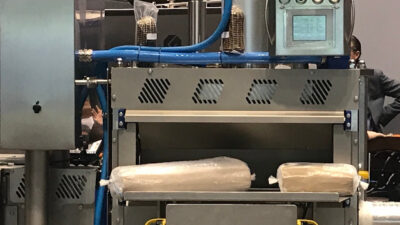“You can’t make supply chains simple, nor can you stop them from changing,” says Richard Douglass, director of industry marketing for manufacturing at Sterling Commerce. “But you can use technology . . . to eliminate unnecessary complexity.”
Photography would seem to be a simple business, particularly in this age of digital cameras where nearly anyone can churn out pictures on desktop printers. But Lifetouch —an Eden Prairie, Minn.-based enterprise that processes professional portraits for schools, churches, and retailers like Target and JCPenney—runs a complex operation.“The digital-imaging revolution has redefined the photography industry, creating many new challenges, as well as new opportunities,” says Jay Drayton, director of information systems architecture at Lifetouch National Studios. To cope with those challenges and take advantage of the opportunities, Lifetouch recently purchased a new order management software package.This package—the Selling and Fulfillment Suite from Sterling Commerce —is expected to let Lifetouch determine exactly which of its North American photo processing labs can handle orders as they come in. It also should allow for tracking the movement of the millions of images that travel through the Lifetouch supply chain each year, ensuring that all customers receive the proper orders on time.How Lifetouch fares with this system also could go a long way toward answering a question that many manufacturers are pondering: Is it possible to apply Lean principles to today’s inherently complex global supply chains?Richard Douglass, director of industry marketing for manufacturing at Sterling Commerce, says the answer is yes, as long as manufacturers have the right understanding ofLean, at its most basic level, calls for simplifying all processes, eliminating any unnecessary activity. When applying that theory to supply chain management, the question becomes: How do you simplify processes that require interaction between people spread out over the globe?“First, you have to realize that supply chains will always be complex,” Douglass says. “Some of that complexity is actually good—such as when a company introduces new products, acquires another business, or outsources a function to lower costs. The key is avoiding unnecessary complexity.”Douglass says Sterling has tools to help manufacturers manage all forms of complexity in its Gentran Integration Suite (GIS), and the Selling and Fulfillment package.“Our products supplement a company’s existing core systems, including ERP, and make it easier for them to respond to changes in their environment,” Douglass says.Mergers and acquisitions are a big driver of change, and they often present the greatest challenge when it comes to managing ERP systems. “No one purchases a company because of the systems they run,” Douglass notes. “That’s why we often have customers who find themselves with multiple ERP systems.”When one acquisitive Sterling customer decided to put all of its business units on a single ERP system, it discovered it could take up to eight“We recommend creating an order management framework that can sit on top [of the existing IT infrastructure],” Douglass says. “It can be easily configured and reconfigured and still integrate with those underlying foundational systems like ERP. That’s how both our applications and integration tools come into play.”Sterling’s integration tools provided the means for passing information out of and back into the various ERP systems, while its order management applications cleaned any discrepancies that might have existed in the data on the front end. Douglass says that error proofing is critical to eliminating unnecessary complexity for companies that sell through multiple channels—as most manufacturers now do.“You can’t make supply chains simple, nor can you stop them from changing,” Douglass concludes. “But you can use technology to help people find ways of eliminating the unnecessary complexity.”



